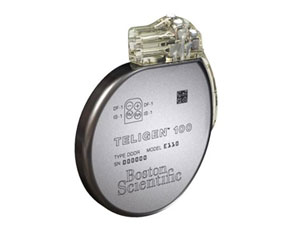ICD Defibrillator
Defibrillators are a great way to save a life if a sudden cardiac event occurs. When you have a loved one who has a heart condition, you naturally want to get the best care for them. One of the ways you can do this is via defibrillators. These are devices that will reset the heart if it were to have a sudden problem. The heart is the organ of the body that moves the blood around. The beating of the heart is the method by which the blood is moved. This beating motion is facilitated by the heart pacemaker. This is known as the SA node. As the heart ages and disease sets in, sometimes the electrical signal sent by the SA node can go awry.
When this happens, it can be called fibrillation, either atrial or ventricular fibrillation. The defibrillator does just what it sounds like: it de-fibrillates the heart. One method of doing this is via an ICD (Implantable cardioverter-defibrillator). This is a great way to have your heart monitored without having to constantly worry about doing it manually. Instead, the ICD defibrillator is implanted into a patient and it will monitor the heart for problems 24 hours per day.
Who Needs an ICD Defibrillator?
If you or your family member has a heart condition that may be at risk of atrial or ventricular fibrillation, your doctor may want you to get an ICD defibrillator. This is going to allow your heart to be monitored at all times; this is much like a pacemaker. It is inserted into a patient and is an “always on” kind of device. The difference between a pacemaker and an ICD defibrillator is that the pacemaker constantly sends electrical impulses to the heart. The natural pacemaker of the heart is no longer used. The heart is only controlled by the device. With an ICD, there is no constant innervation. Instead, the ICD defibrillator only innervates the heart with a “shock” when it is need; when it is in fibrillation!
Getting and Living With an ICD Defibrillator
If you and your doctor decide that an ICD is for you or your loved one, you will need to schedule its insertion. It will need to be done by a qualified surgeon or other doctor. After it has been installed, there will be some changes in lifestyle, but not many. For the most part, a person with an ICD defibrillator can do the same physical activities they would have been able to do prior to having the device inserted. Keep in mind though, that the ICD doesn’t improve your heart health. If you had heart disease before having the ICD inserted, you will have it after. The ICD defibrillator is just a safety mechanism. It can be a scary idea to have a “shocker” in your chest, thinking it could go off at any point. But you must keep in mind it is there to save your or your loved one’s life. Consult with your doctor soon if you feel an ICD defibrillator is right for you.

